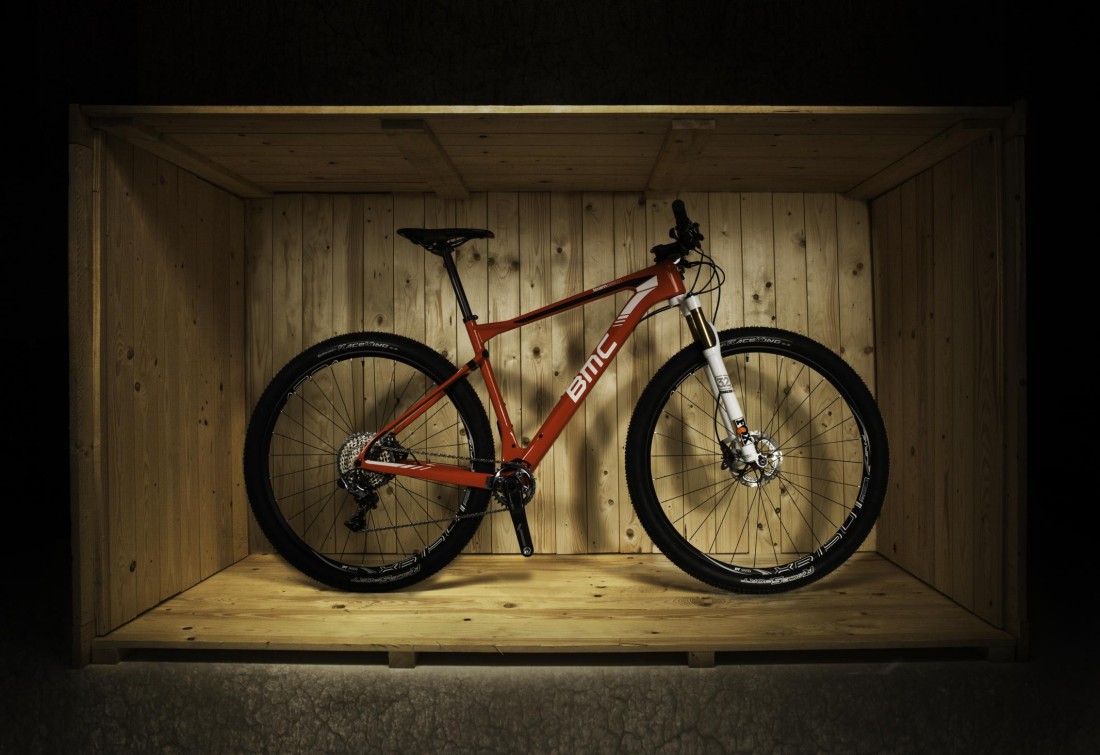The Swiss don’t do things by halves, and BMC haven’t been known to take bike design lightly. The Impec Lab has teamed up with the BMC Mountainbike Racing Team to create the new BMC Teamelite 01 – the world’s most technically advanced hardtail mountain bike.
Cross-country racing, and marathon racing, demands absolute perfection from your bike and you. Cross-country races are grueling, all-out sprints to the finish requiring bikes whose maximum efficiency and minimum weight ethos have paid little heed to compliance. The new BMC Teamelite 01 is set to change that. Its unique combination of efficiency, traction, and fatigue-fighting compliance technology places it in a category of its very own. Maybe this is the new ‘soft tail’?
Over the past 2 years, BMC’s team of composite engineers have evolved carbon designs and tested and re-tested MTB prototype function and feasibility at the Impec Lab in Grenchen, BMC’s in-house composites and engineering playground. After a final round of testing with the world’s most successful mountain bikers, the BMC MTB Racing Team, the end result has come to life in the form of revolutionary race performance.
Micro Travel Technology (MTT)
Touted to be a “New Solution for Rear-End Compliance”, the new BMC Teamelite 01 possesses an innovative solution to rear-end hardtail compliance. PLaying with tyre pressure can now be purely for traction and rolling resistance – not rear end compliance. MTT’s damping and additional frame compliance smoothes out the ride, letting riders apply more power to gain that elusive differentiator; speed.

The Philosophy
Part carbon construction and part technical feature, MTT provides 15mm of rear-end compliance. It is supported structurally by the dual-guided, fully integrated XCell damper that enhances lateral and torsional frame stiffness. Thanks to advances in the carbon technology used for the seat and chain stays, pedalling efficiency and drivetrain stiffness are maintained.
The icing on the cake? All of these invaluable extras create a 1,080 gram total frame weight (hardware included) with absolutely no compromise to race performance. The MTT might be a great pick for hilly stage races like TransAlp, or marathons with an exceptional amount of climbing, and rough descents.
Additional Updates to the New Teamelite 01
In addition to the compliance advancements in the new hardtail, the rear dropouts of the bike have also received an update with 142mm thru-axle spacing. The new frame design also makes integrated cable routing much simpler. Maintaining Big Wheel Concept (BWC) 29er geometry throughout the line, the 2016 Teamelite 01 comes in 5 sizes (XS/S/M/L/XL) with an additional 85mm of clearance on the all-new XS over the previous model year’s smallest size.

Race Proven by World’s Best in 2015
World Champions are allowed to demand the absolute best and most advanced equipment from their suppliers – every second counts. Five time World Champion and BMC Mountain Bike Racing Team rider, Julien Absalon will put the bike to the test in this year’s MTB World Cup Series. “To be honest, when I tried out the new MTT technology, I was anticipating a compromise” says Absalon, “I’m convinced it climbs just as good as last year’s bike, with a little extra something for the down hills which we definitely need. I’m very happy to have this edge!”

Ralph Näf
The BMC Mountain Bike Racing Team has been racing on the new bike since February and will use it, paired with the Fourstroke 01, to tackle the 2015 World Cup season and beyond.
But what does it mean for the rest of us?
In essence, BMC have made a kick arse hardtail that should take the kick away from your arse. By no means will it be as compliant as a lightweight dual suspension frame, but depending on your riding or racing – that might be fine. Given that BMC have said they have designed this for XCO racing, it’s no surprise that it’s meant to be more efficient with minimal weight. You just need to be comfortable for 1.5hrs.
But that doesn’t mean it won’t have a place in marathon races and stage races. Events in the Alps often have long, arduous climbs, but increasingly they take in more technical descents. For many of these you would be out of the saddle on a short travel full suspension bike anyway, so a lighter frame that takes the edge off the whole time is a good idea – especially with less complexity for day to day maintenance, plus the lower weight.
All of a sudden this sounds very similar to the soft tails of the late 90’s. But they were usually built around a micro shock that wasn’t always tuneable or replaceable, and still carried a certain amount of weight. They weren’t known to be outrageously stiff either.
This could well be a great choice for those who don’t want the baggage (both in weight and servicing) of a full suspension, but want some more compliance in their race rig.

The BMC Teamelite 01 XT

The BMC Teamelite 01 XTR Di2

The BMC Teamelite 01 with XX1
